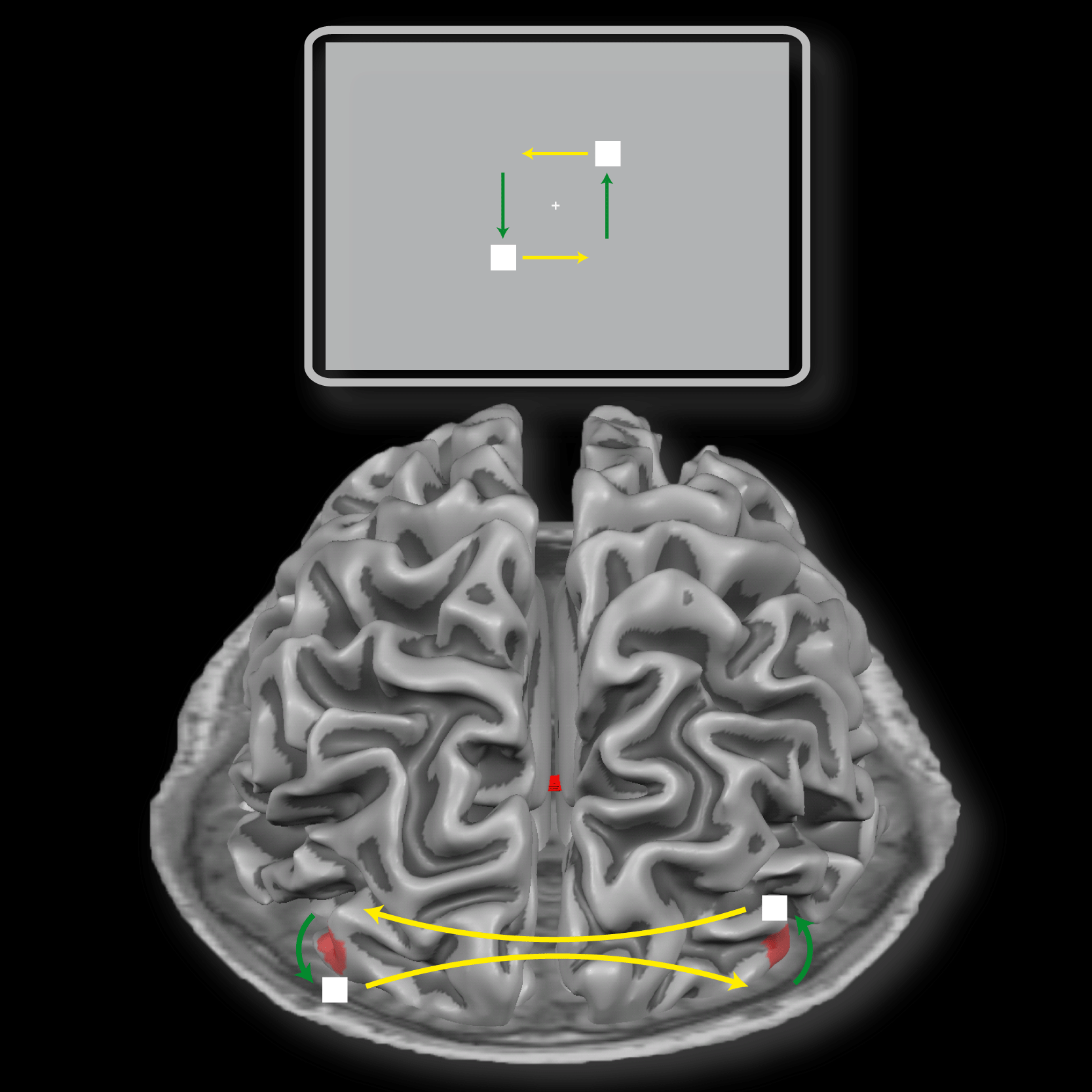How people perceive motion involving two hemispheres differently
September 9, 2011
Researchers from the Max Planck Institute for Brain Research in Frankfurt have investigated whether differences between individuals in the anatomy of the corpus callosum of the brain would predict how observers perceive a visual stimulus for which the left and right hemisphere need to cooperate.
In their study, Erhan Genç and colleagues used a motion illusion, called the “motion quartet,” which can be perceived in two different ways. The “motion quartet” induces the phenomenon of apparent motion, where the impression of motion is caused by a sequence of static stimuli. This is similar to movies in TV or cinema, which consist of a sequence of still pictures that nevertheless generate a perception of natural dynamics.
They used diffusion tensor imaging and functional magnetic resonance imaging to investigate which callosal connections contribute to the subjective experience of a visual motion stimulus that requires interhemispheric integration. they found that observers are more likely to perceive vertical than horizontal motion when the stimulus is presented centrally in the visual field. This asymmetry has been attributed to the fact that, with central fixation, perception of horizontal motion requires integration across hemispheres whereas perception of vertical motion requires only intrahemispheric processing.
They were able to show that the microstructure of individually tracked callosal segments connecting motion-sensitive areas of the human MT/V5 complex (hMT/V5+) in the brain can predict the conscious perception of observers. Neither connections between primary visual cortex (V1) nor other surrounding callosal regions exhibit a similar relationship.
“It is fascinating to see how closely individual differences in conscious perception are linked to differences in the architecture of the brain,” comments Erhan Genç. The experiments establish how much anatomical differences in the layout of connections influence even very basic sensory processes, especially when communication across the brain hemispheres is required.”
Future research will investigate whether similar effects can be found for other visual features or sensory modalities, and whether other connections between the hemispheres outside the corpus callosum also determine our individual subjective experience.
Ref. Erhan Genç, Johanna Bergmann, Wolf Singer, and Axel Kohler, Interhemispheric Connections Shape Subjective Experience of Bistable Motion, Current Biology, September 1, 2011
